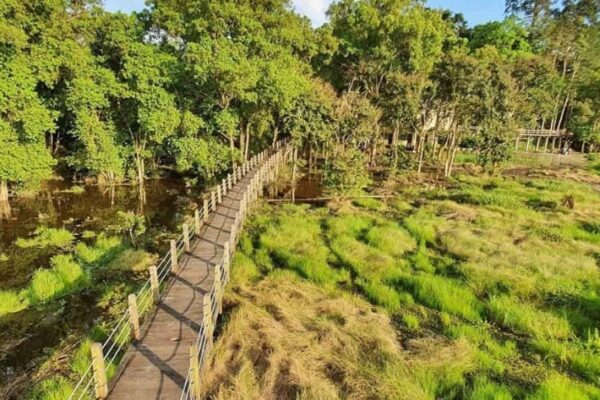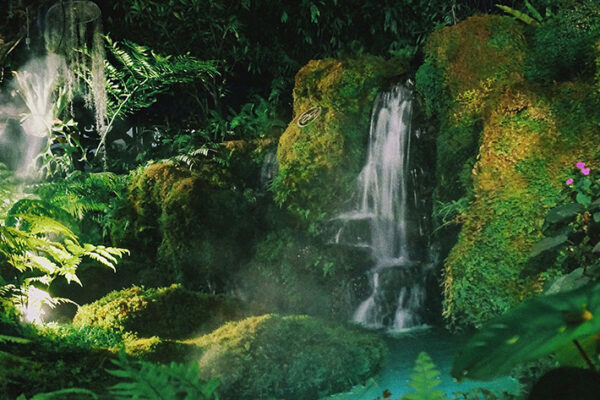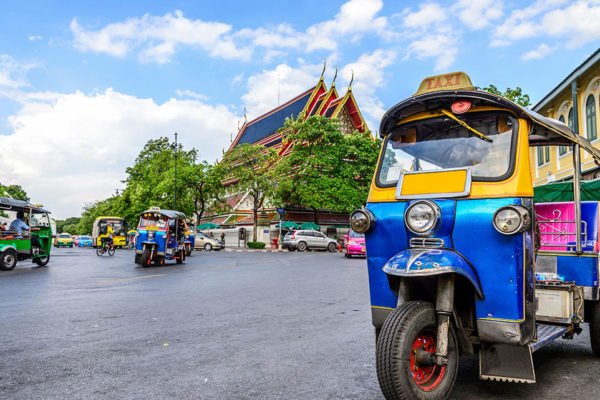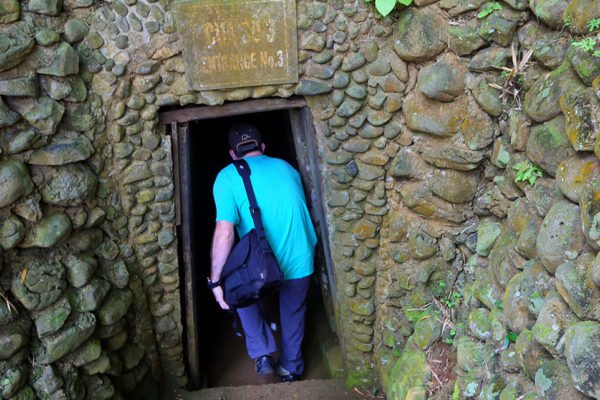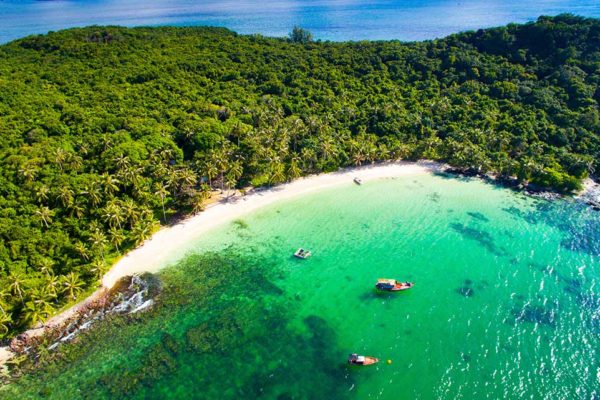Top 13 Vietnam National Parks to Visit for Nature Lovers
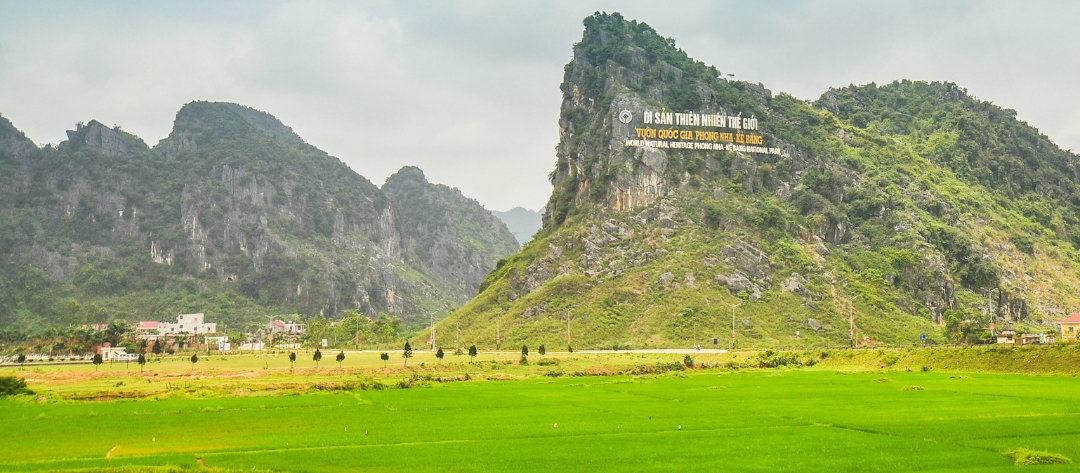
Vietnam has over 30 national parks, showcasing rich biodiversity, stunning landscapes, and rare wildlife. These protected areas reflect the country’s ecological and cultural diversity, drawing visitors who appreciate natural beauty and conservation efforts. ‘
In this guide, we’ve selected the top 13 Vietnam national parks that offer the best outdoor experiences. Each park on the list promises a memorable journey into Vietnam’s wild and wonderful natural world.
Why Vietnam National Park Is The Perfect Getaway for Wildlife Experts
With a rich ecological heritage and an increasing commitment to conservation, Vietnam has become a rising star on Southeast Asia’s wildlife tourism map. Here’s why Vietnam national parks are the perfect destination for your next expedition:
A Biodiversity Hotspot Worth Exploring
Vietnam’s national parks are located within the Indo-Burma Biodiversity Hotspot—one of the most ecologically rich regions on Earth. These parks shelter thousands of plant and animal species, many of which are endangered or found nowhere else.
Activities That Go Beyond Observation
If your work or passion involves active engagement with ecosystems, Vietnam’s national parks won’t disappoint. Visitors can trek across ancient rainforests, hike up mountain trails, explore vast cave systems like those in Phong Nha–Ke Bang, or quietly observe birds along tranquil rivers.
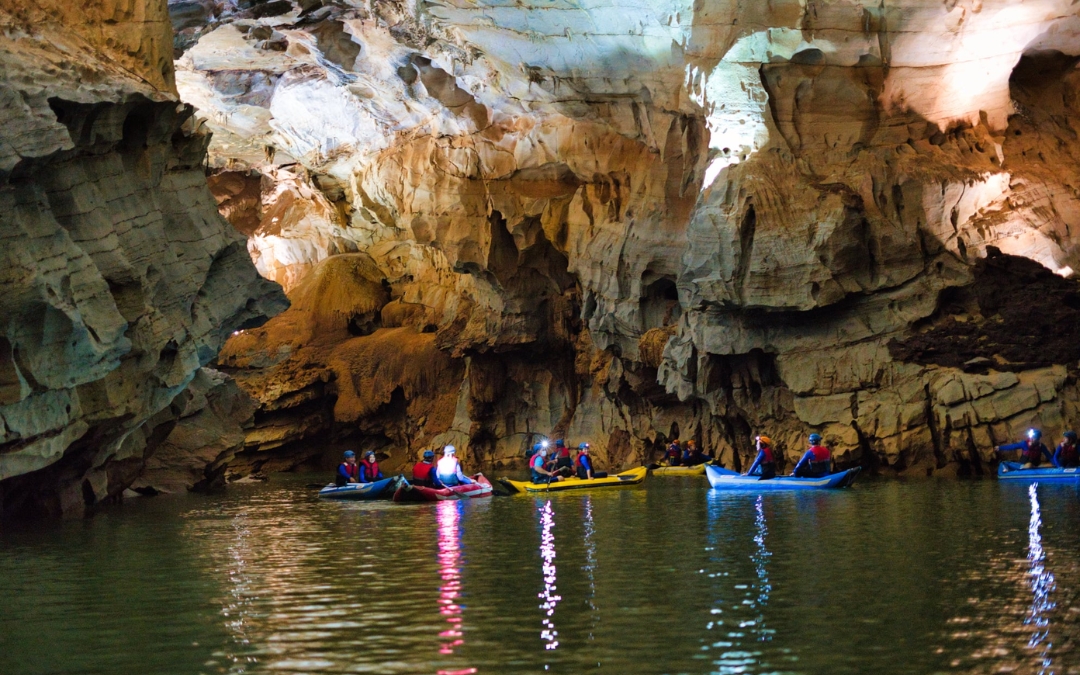
Boat rides in Phong Nha Cave let you explore deep inside the mountain’s heart.
Ecotourism That Supports Real Conservation
One of the strongest reasons to visit Vietnam’s national parks is their focus on community-based conservation. Ecotourism efforts in parks like Cat Tien and Bach Ma help fund wildlife protection, reforestation, and environmental education.
Meet the People Who Live with the Forest
Vietnam’s national parks are not just wild spaces—they are also home to vibrant indigenous and ethnic communities. Encounters with groups such as the Muong, Tay, Van Kieu, or Arem offer a rare glimpse into traditional knowledge of medicinal plants, animal tracking, and sustainable forest living. These cultural exchanges deepen the ecological journey, enriching your visit with stories that science alone can’t tell.
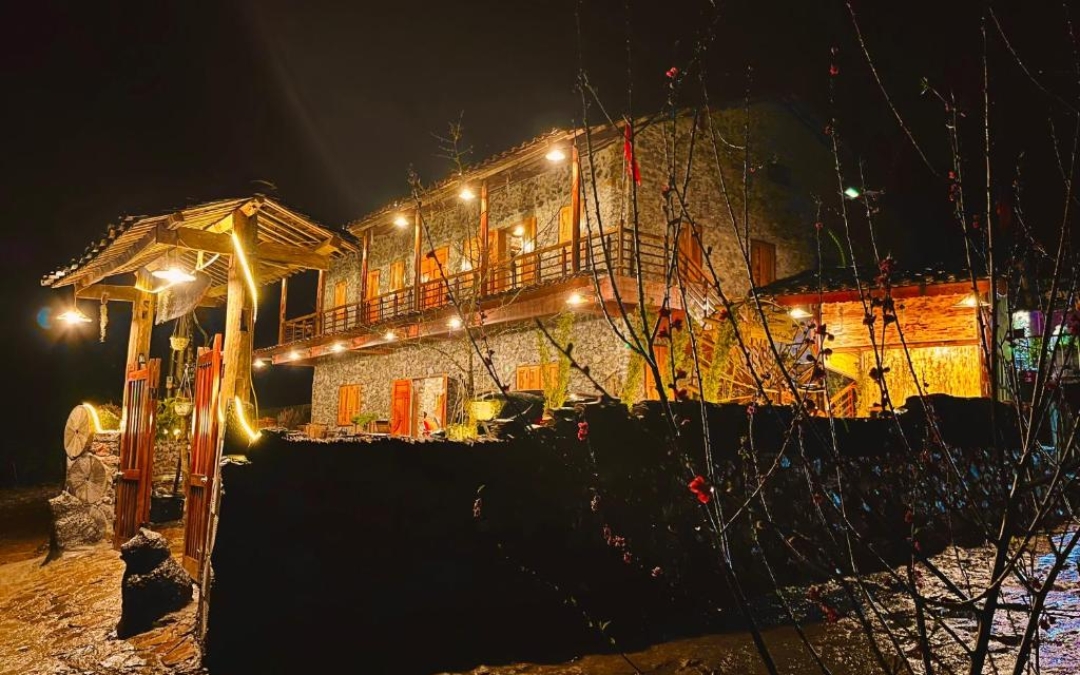
Stay at a local homestay to experience daily life with welcoming Vietnamese hosts.
>> See tour: Vietnam Explorer Tour 18 Days
Top 13 Must-Visit National Parks in Vietnam for Nature Lovers
Vietnam national parks offer diverse landscapes and rich biodiversity, making them perfect destinations for nature lovers and adventure seekers alike.
Ba Be National Park (Bac Kan)
Ba Be National Park is located in Bac Kan Province, covering an area of 10,048 hectares. It is renowned for its scenic beauty and is home to the largest natural freshwater lake system in Vietnam, Ba Be Lake.
The park is characterized by its towering limestone mountains, crystal-clear rivers, and diverse ecosystems. It is also home to an array of wildlife, including endangered species like Francois’ langurs, pangolins, and the Asiatic black bear. The rich flora includes rare plants that thrive in the moist, tropical climate.
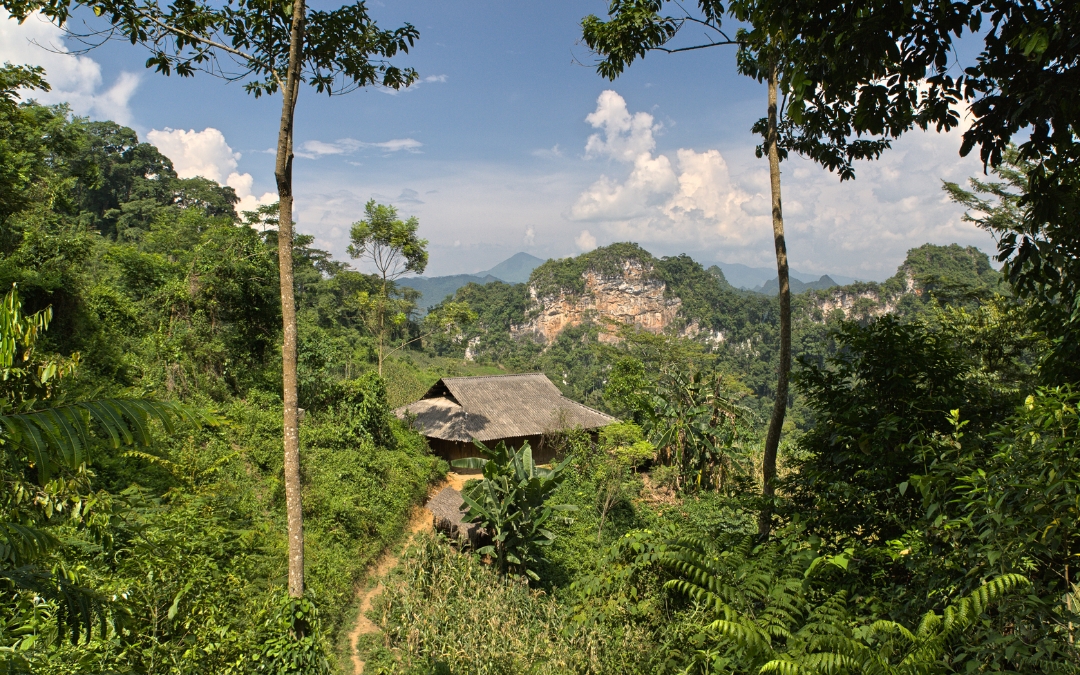
Ba Be National Park boasts lush forests and mountains rich in wildlife and trails.
Top activities for visitors:
- Take a boat tour around Ba Be Lake to explore limestone caves like Puong Cave and enjoy the serene views.
- Hike to Tay Con Linh Mountain for stunning vistas and the chance to spot rare wildlife.
- Cycle scenic routes to visit villages like Khuoi Ky and Pác Ngòi, experiencing local culture.
- Visit waterfalls like Thac Bac and Bac Son for a peaceful retreat and great photo opportunities.
Best time to visit: The best time to visit is from October to April, when the weather is cool and dry, perfect for outdoor activities.
Travel tips: The park is over 240 km from Hanoi, which can be reached by bus or private car.
Suggested duration for visit: A 2-3 day trip is ideal to fully explore the park and experience both its natural beauty and local culture.
Ba Vi National Park (Ha Noi)
Ba Vi National Park is located in Hanoi, covering an area of 9,702 hectares. Just 50 kilometers from the city center, it offers a perfect escape with its cool climate and breathtaking landscapes.
The park features three distinct zones: a strictly protected zone above 400 meters, an ecological restoration zone below 400 meters, and an administrative service zone. Visitors can enjoy the cool climate, pristine forests, and scenic rivers like Thien Son – Ngoc Nga Stream and Ao Vua.
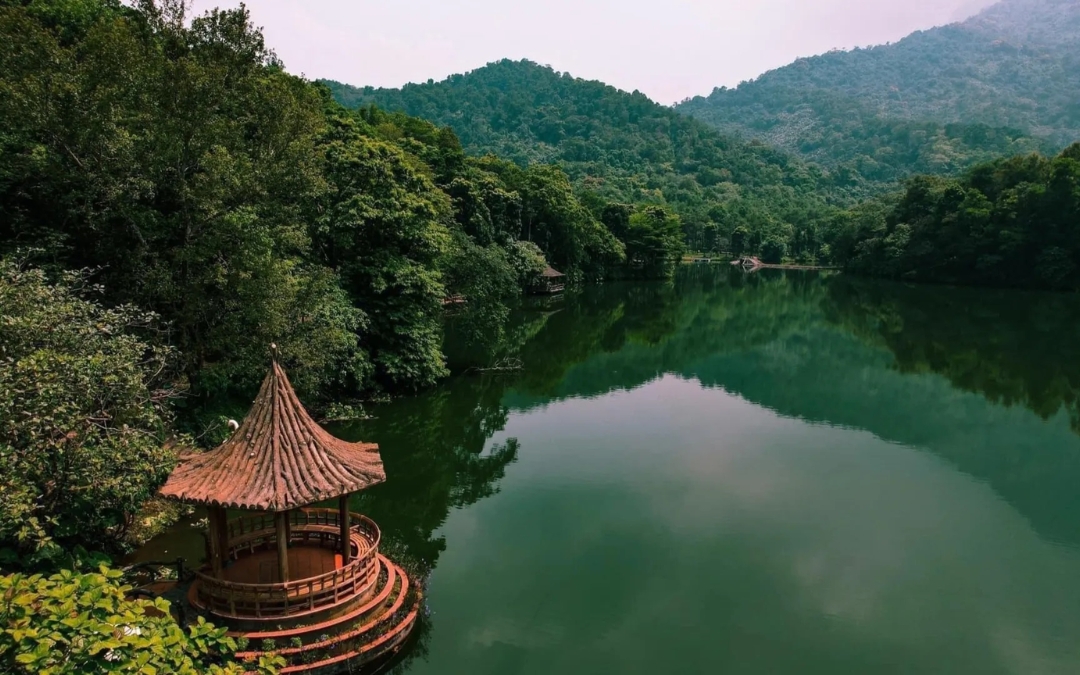
Ba Vi’s misty peaks and tranquil lakes offer easy trails near vibrant Hanoi.
Top activities for visitors:
- Hike to Ba Vi Mountain for stunning views and to experience the diverse flora and fauna.
- Explore ancient temples like Thượng Temple, Trung Temple, and Hạ Temple, dedicated to Uncle Ho.
- Visit natural streams like Ao Vua and Suoi Tien for a peaceful retreat.
- Bird-watching in the park’s lush forests and diverse ecosystems.
Travel tip: Consider purchasing supplies in Son Tay, the nearest town, as options within the park are limited.
Best time to visit: The best time to visit is from October to April, when the weather is cool and ideal for outdoor activities.
Suggested duration for visit: A 2-day trip is perfect to explore the park’s natural beauty, historical sites, and enjoy outdoor activities.
Cat Ba National Park (Hai Phong)
Nestled on the beautiful Cat Ba Island in Hai Phong, Cat Ba National Park spans over 15,000 hectares, offering a diverse and rich ecosystem. With a combination of tropical forests, mangrove swamps, and coastal areas, the park serves as a sanctuary for both terrestrial and marine life.
The lush forests, which cover 9,800 hectares, are home to a range of species, including the critically endangered Cat Ba langur, along with various birds and reptiles. As part of the UNESCO Biosphere Reserve, Cat Ba is a hotspot for biodiversity.
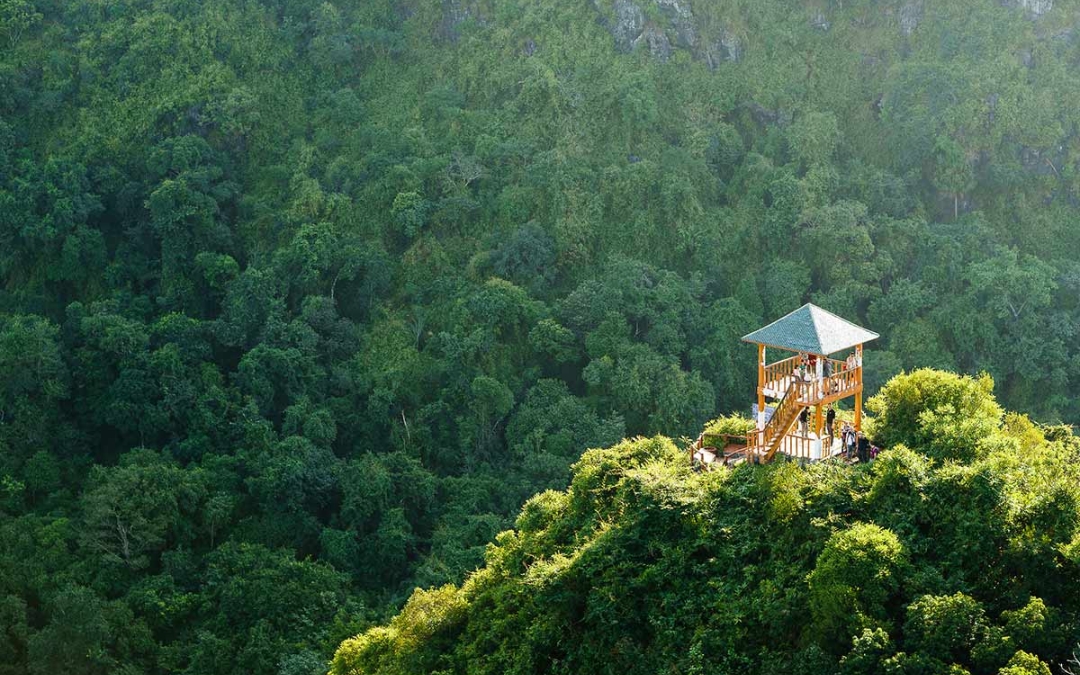
Cat Ba’s 9,800-hectare forest shelters rare species like the endangered Cat Ba langur.
Top activities for visitors:
- Climb to the top of Ngu Lam Peak for panoramic views of the island and Lan Ha Bay, with a challenging trek through the forest.
- Discover Trung Trang Cave, a fascinating limestone cave located deep in the forest.
- Visit Hospital Cave, a historical site once used during the Vietnam War.
- Cycle through the park to Viet Hai Village, and get a taste of rural life while exploring the tranquil countryside.
Travel tip: The park’s terrain can be rugged, so it’s best to wear comfortable shoes and bring essentials like water, sunscreen, and a hat for sun protection.
How to get there: Cat Ba Island can be accessed by a ferry from Hai Phong. Once on the island, taxis, motorbikes, or bicycles are available for travel within the park.
Best time to visit: The best time to explore Cat Ba is from October to April, when the weather is cool and dry, perfect for outdoor activities.
Cuc Phuong National Park (Ninh Binh – Hoa Binh – Thanh Hoa)
For nature enthusiasts and adventure seekers, Cuc Phuong National Park offers an incredible escape, located over 120 km southwest of Hanoi. Established in 1962, it is the first Vietnam national park, covering an area of 22,200 hectares.
With limestone mountains ranging from 300m to 600m above sea level, the park is home to a rich diversity of flora and fauna, including over 300 bird species, 71 mammal species, and rare primates like the Delacour’s langur. The lush forests are teeming with towering ancient trees, while caves like and Dang Cave add a touch of mystery with their prehistoric significance.
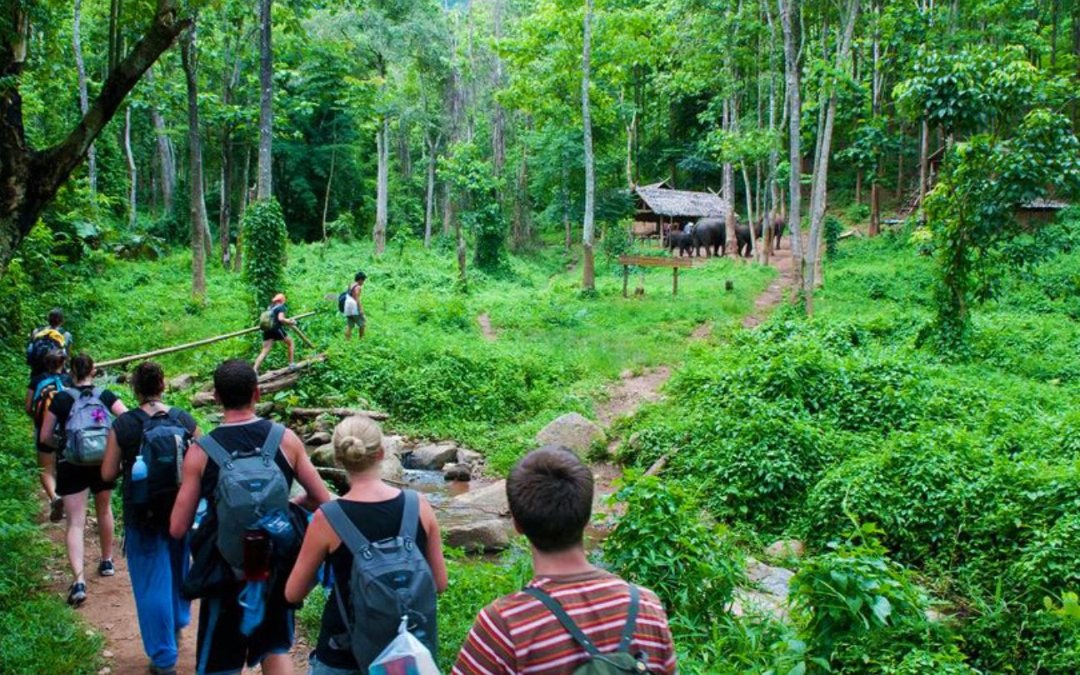
Cuc Phuong is Vietnam’s oldest national park with rich biodiversity.
Top activities for visitors:
- Hike through ancient forests to witness the park’s thousand-year-old trees and striking limestone formations.
- Explore caves like Son Cung Cave, Pho Ma Giang Cave and Dang Cave, which hold fascinating traces of prehistoric life.
- Camp overnight in the park to fully immerse yourself in the serene, natural environment.
- Trek and mountain climb to enjoy the stunning scenery and engage in adventure tourism.
Best time to visit: The best time to visit is from November to April, when the weather is cool and dry, making it ideal for hiking and outdoor activities.
How to get there: The park is reachable by bus or private car from Hanoi, taking about 2.5 to 3 hours.
Accommodation: There are several guesthouses and eco-lodges near the park for a comfortable stay.
Pu Mat National Park (Nghe An)
If you’re seeking a destination with diverse landscapes and rich biodiversity, Pu Mat National Park, located in Con Cuong District, Nghe An Province, is the perfect spot. Spanning over 94,000 hectares, the park is known for its tropical forests, limestone mountains, and grasslands.
Situated at 18°46′ North latitude and 104°24′ East longitude, it shares its southern border with Laos. The park is home to 2,500 plant species and nearly 1,000 animal species, many of which are rare and newly discovered.
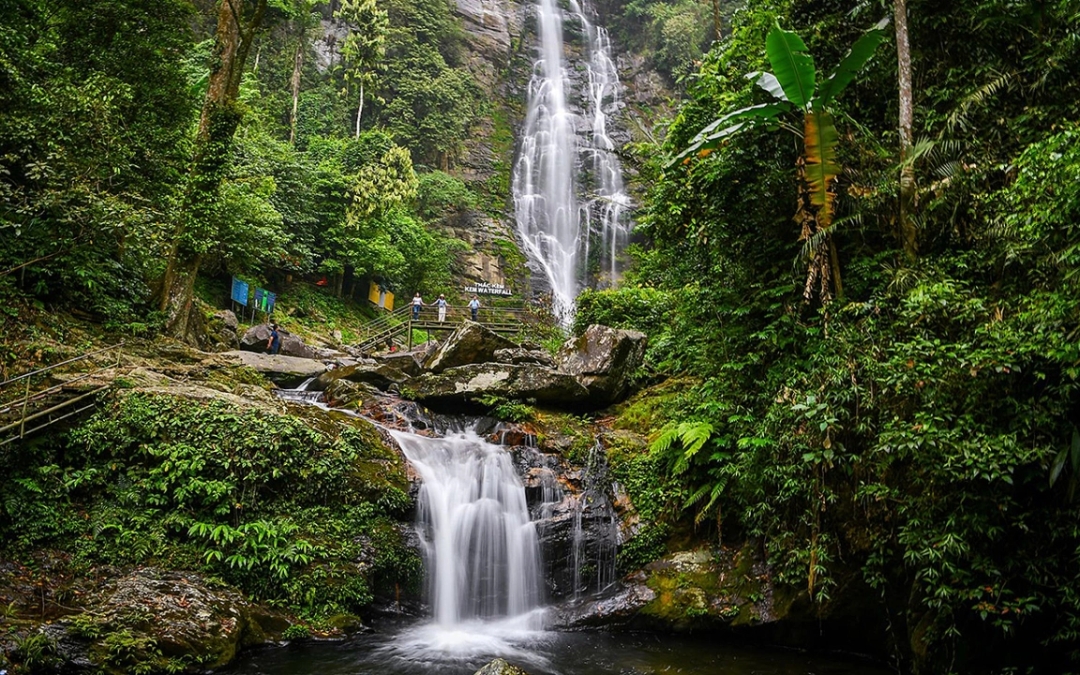
Vietnam national park explorers love Pu Mat for its untouched terrain.
Top activities for visitors:
- Trek through Khe Thoi Forest to explore the untouched beauty of the primary forest and enjoy the tranquility of nature.
- Visit Khe Kem Waterfall for a refreshing escape and a perfect photo opportunity.
- Explore the ethnic villages of the Thai, H’mong, and Dan Lai communities in Con Cuong to experience local culture and traditions.
- Take a boat ride along the Giang River for scenic views and a peaceful journey through the park’s lush surroundings.
Travel tip: To find the best swimming spot, it’s highly recommended to hire a local guide.
Best time to visit: The best time to visit is from November to April, when the weather is cooler and drier, making outdoor activities more enjoyable.
How to get there: The park is about 200 km from Vinh City, accessible by private car or bus.
Phong Nha – Ke Bang National Park (Quang Binh)
For those seeking a blend of adventure and natural beauty, Phong Nha – Ke Bang National Park in Bo Trach District, Quang Binh Province, offers an unforgettable experience. This UNESCO World Heritage Site is renowned for its karst mountains, tropical forests, and underground rivers, along with a rich diversity of wildlife, including rare species such as the saola and Vietnamese pheasant.
Spanning over 200,000 hectares, the park is home to the world’s largest cave, Son Doong, as well as over 400 other caves. The park’s unique limestone formations and lush green forests make it one of the most geologically significant sites on Earth.
Updated News: Phong Nha – Ke Bang National Park and Hin Nam No National Park in Laos have emerged as the two nations’ first transboundary World Heritage sites.
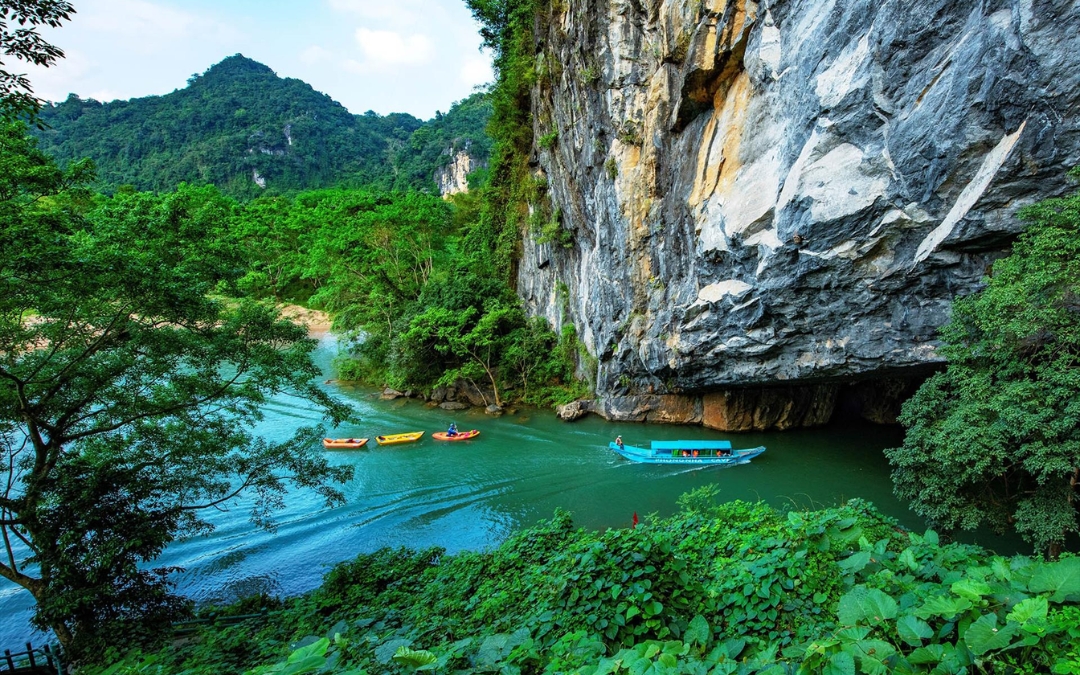
Vietnam national park guides praise Phong Nha for epic cave systems.
Top activities for visitors:
- Explore Son Doong Cave, the world’s largest cave, and venture through its vast chambers and underground ecosystems.
- Kayak on the Chay River, navigating the calm waters surrounded by the park’s lush forests and limestone formations.
- Tour Phong Nha Cave and Paradise Cave, marveling at their magnificent stalactites and stalagmites.
- Experience the zipline at the Chay River Dark Cave, combining adventure and nature with stunning views.
Best time to visit: The best time to visit is from January to August, when the weather is dry and ideal for outdoor activities.
Travel tips: For caves like Son Doong and Hang En, guided tours are required as they are exclusive and permit-based. These tours are very popular and book up quickly, so it’s best to reserve spots early to ensure your place.
How to get there: The park is 50 km northwest of Dong Hoi City and can be reached by car or bus.
Accommodation: Stay in Dong Hoi City or Phong Nha Town, where you’ll find a range of accommodations, from guesthouses to eco-lodges.
Suggested duration for visit: A 3-day trip allows you to explore multiple caves, trek through the forests, and enjoy the park’s diverse activities.
>> Read more: Phong Nha Ke Bang National Park Tour – What to Expect
Bach Ma National Park (Thua Thien Hue)
If you think that Hue is all about tombs and city sightseeing, you’re missing out on the city’s natural wonders, with Bach Ma National Park being a must-see. Located in Phu Loc District, Thua Thien Hue Province, this park offers an immersive experience into the wild nature of Hue, just a short distance from the city.
Covering an area of over 22,000 hectares, the park is home to a rich ecosystem with 1,400 plant species and several rare and endangered animals, such as the red-shanked douc langur and Annamite striped rabbit.
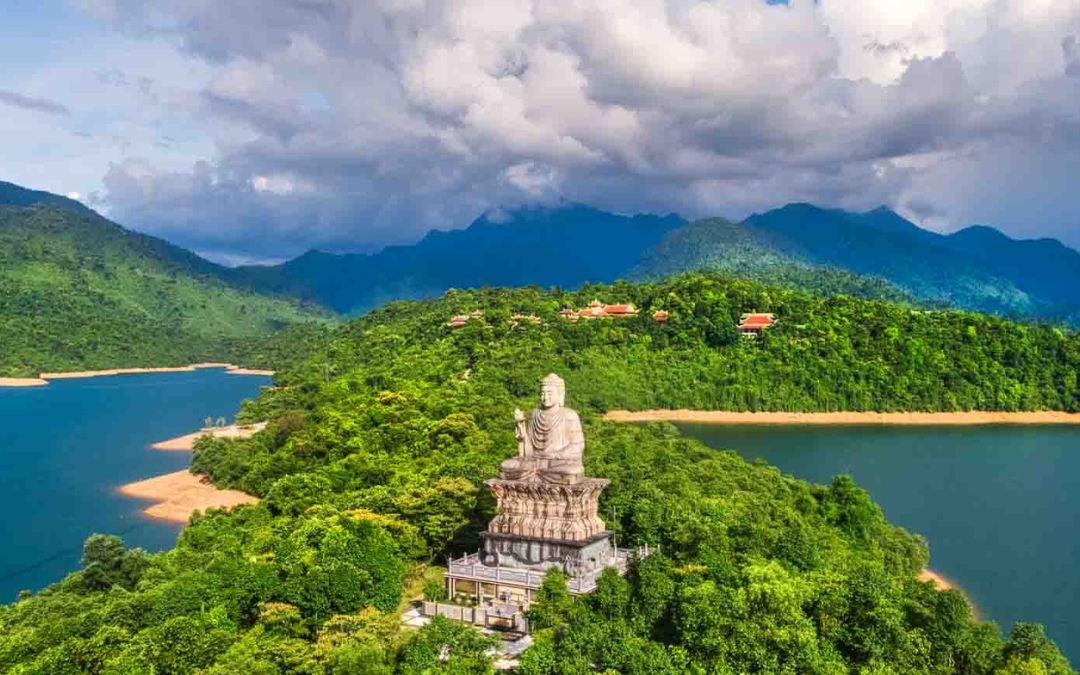
Bach Ma National Park features mountain trails and a peaceful hilltop Buddha statue.
Top activities for visitors:
- Hike to Vong Hai Dai Peak for stunning panoramic views of the park and the coast.
- Visit Do Quyen Waterfall, a majestic waterfall over 300 meters tall, perfect for adventure seekers.
- Explore the Ngu Ho Lakes, a series of cool, pristine lakes nestled in the heart of the park.
- Camp in the park’s serene environment, surrounded by forests, streams, and mountain views.
Best time to visit: The best time to visit is from November to April, when the weather is cool and dry, making outdoor activities more comfortable.
Travel tips: The weather in Bach Ma can change quickly, so it’s important to bring waterproof clothing or a rain jacket.
How to get there: The park is about 40 km from Hue, accessible by car or motorbike.
Yok Don National Park (Dak Nong – Dak Lak)
Located in the Central Highlands of Vietnam, Yok Don National Park covers an area of 115,000 hectares, with a diverse range of ecosystems, from dry dipterocarp forests to savannas and wetlands. The park is home to several rare and endangered species, including the Asian elephant, Indochinese tiger, and sun bear.
This national park is primarily made up of primary forests, with 90% of its area protected for conservation. Yok Don is rich in biodiversity, with 196 bird species, 67 mammal species, and 464 plant species.
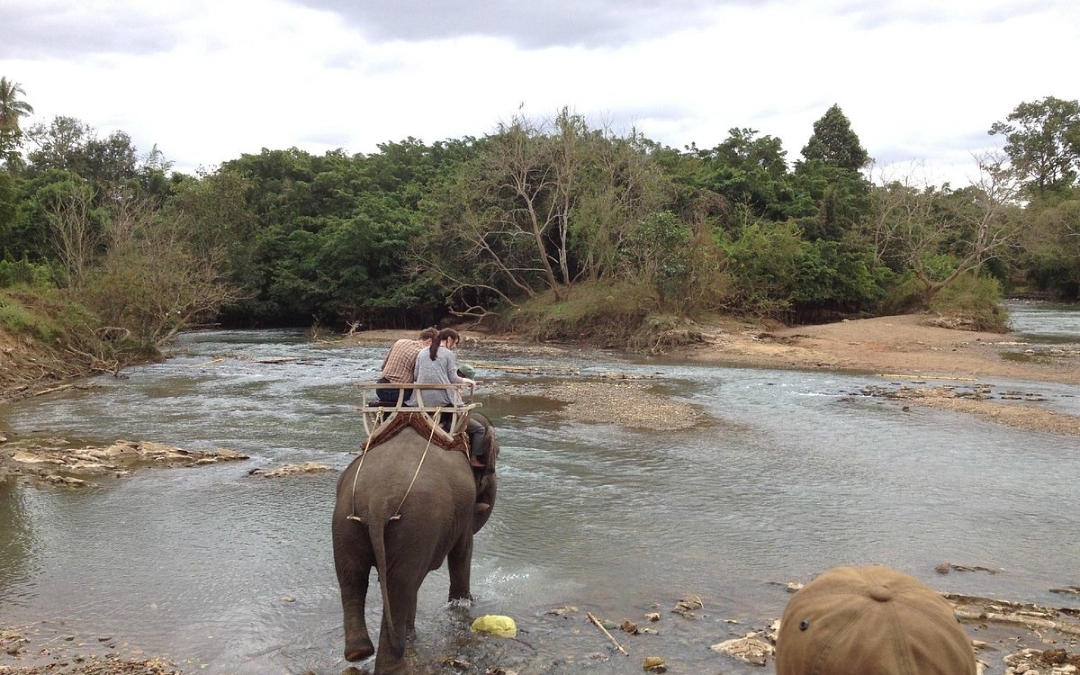
Yok Don is home to free-roaming elephants and dry deciduous forests.
Top activities for visitors:
- Trek to Yok Don Peak and Reheng Peak, where you can conquer the heights and enjoy breathtaking views of the surrounding wilderness.
- Visit the Seven-Branch Waterfall, where seven streams cascade into the Sê-rê-pok River, offering boat rides and fishing.
- Explore the park’s natural habitat and observe elephants in their free-roaming environment.
- Visit the local ethnic communities such as the Ê-đê, M’nong, and Lào peoples, and enjoy traditional dances, music, and cuisine.
Best time to visit: The best time to visit Yok Don National Park is from November to April, when the weather is cooler and ideal for outdoor activities.
How to get there: The park is approximately 40 km from Buon Ma Thuot City. It can be reached by car or motorbike from the city.
Travel tips: Participate in cooking classes with local Êđê families to learn traditional culinary techniques and enjoy authentic dishes
Nui Chua National Park (Ninh Thuan)
Covering an area of 29,865 hectares, Nui Chua National Park is a remarkable destination known for its unique dry forest ecosystem, which is rare in Vietnam. Located in the northeastern part of Ninh Thuan Province, this Vietnam national park is a key conservation and ecotourism area that visitors cannot miss.
Despite the area’s low rainfall, Nui Chua is home to a stunning variety of wildlife and unique landscapes. It features year-round ‘Suspension Lake’, with cool, clear waters and several large streams like Lo O and Dong Nha, which never run dry, creating a beautiful contrast against the surrounding dry forest.
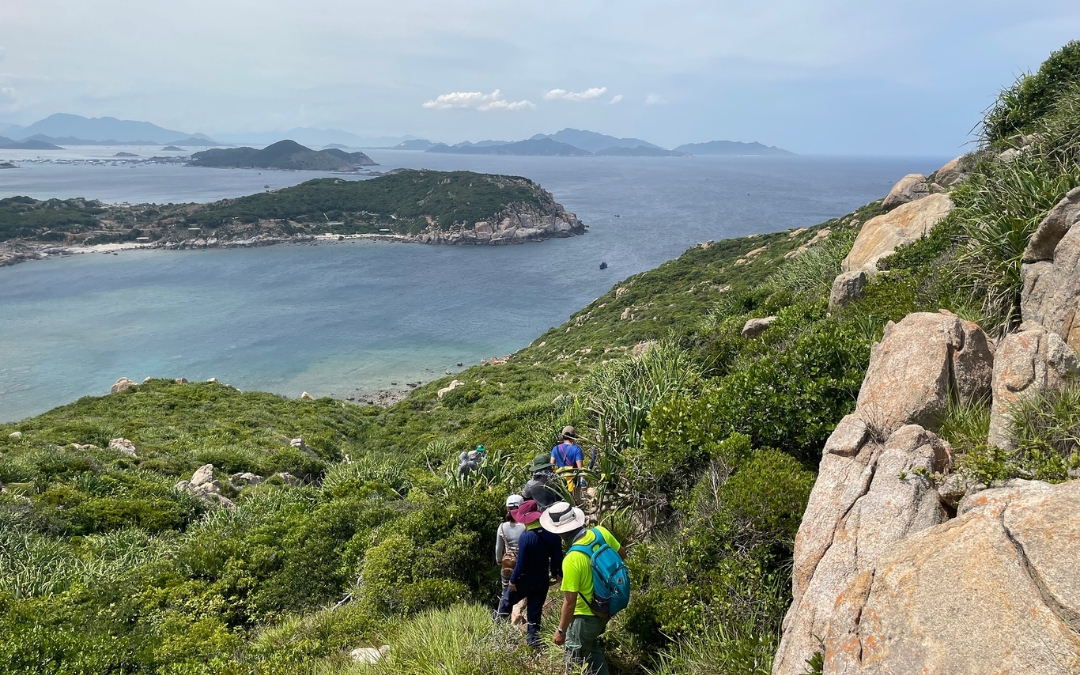
Nui Chua’s dry hills are ideal for those seeking sun and solitude.
Top activities for visitors:
- Hike through Nui Chua’s unique dry forest to witness rare plant species and wildlife adapted to the region’s climate.
- Swim in the cool waters of Suspension Lake and enjoy the surrounding tranquil beauty.
- Explore natural caves like Hang Doi Cave, which offer a peaceful retreat and stunning rock formations.
- Relax at the pristine beaches of Nui Chua, perfect for unwinding after a day of exploring.
Best time to visit: The best time to visit is from March to August, when the weather is dry and perfect for outdoor activities.
How to get there: The park is around 40 km from Phan Rang and can be accessed by car or motorbike.
Accommodation: Stay in Phan Rang or nearby resorts, where you’ll find a range of options, from basic hotels to eco-lodges.
Cat Tien National Park (Dong Nai – Lam Dong – Binh Phuoc)
Located approximately 150 km north of Ho Chi Minh City, Cat Tien National Park spans 71,350 hectares across three provinces: Dong Nai, Lam Dong, and Binh Phuoc. The park is a UNESCO World Biosphere Reserve and is known for its rich biodiversity.
With over 1,600 plant species and a variety of endangered wildlife, including the Indochinese tiger, Asian elephant, and sun bear, Cat Tien is a treasure trove of natural wonders. The park is also home to the Bau Sau Wetland, designated as a Ramsar Site, which supports a variety of bird species like black eagles and hornbills.
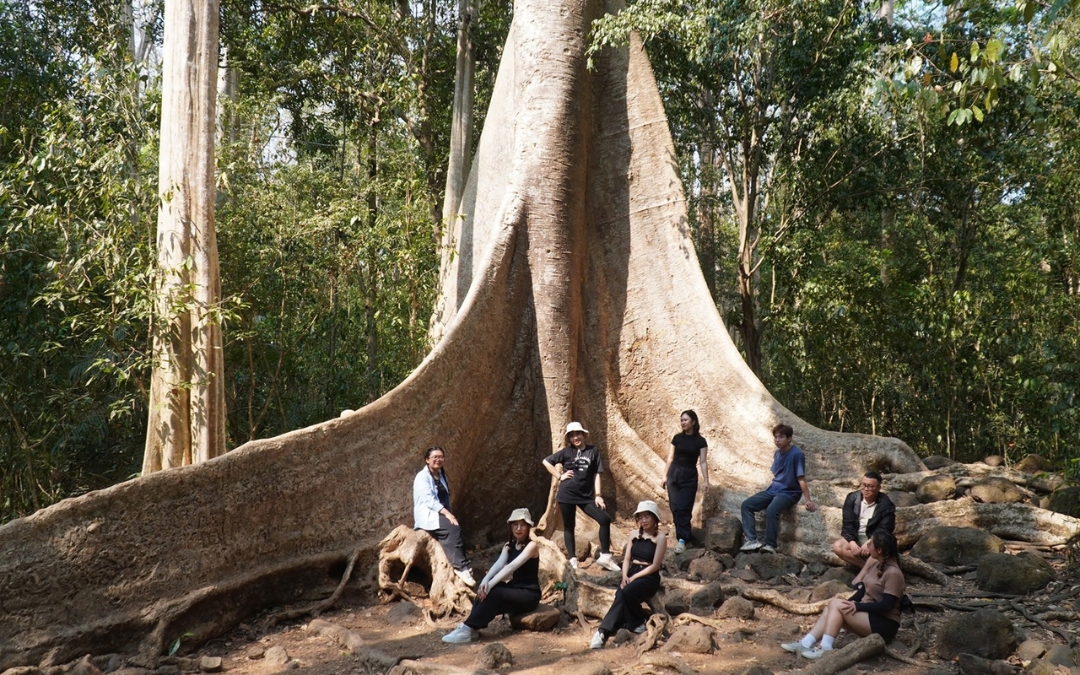
Cat Tien National Park is home to the rare and ancient thần lằn sấm tree.
Top activities for visitors:
- Trekking through the tropical forests to see diverse wildlife, including rare species like the Indochinese tiger.
- Bird-watching around Bau Sau Wetland, home to rare birds such as white-winged ducks and hornbills.
- Boat rides on the Dong Nai River to admire the park’s lush landscape and observe wildlife along the riverbanks.
- Night safaris to spot nocturnal animals, including leopards and sun bears.
- Visit ethnic minority villages to experience local culture and traditions.
Best time to visit: The best time to visit is during the dry season from November to April, when the weather is cooler and ideal for outdoor activities.
How to get there: The park is about 150 km from Ho Chi Minh City, and can be accessed by car or bus.
>> Read More: Cat Tien National Park: Discover The Pristine Nature Of Southern Vietnam
Tram Chim National Park (Dong Thap)
Tram Chim National Park, spanning over 7,500 hectares, is renowned as one of the most important bird conservation areas in the Mekong Delta. It is home to over 190 bird species, including rare and endangered species like the sarus crane and black-faced spoonbill.
This Ramsar Wetland site is vital for protecting the biodiversity of the region and offers a tranquil retreat for nature lovers and bird watchers alike. The flooded season brings particularly scenic landscapes, with colorful skies and an immense sense of peace.
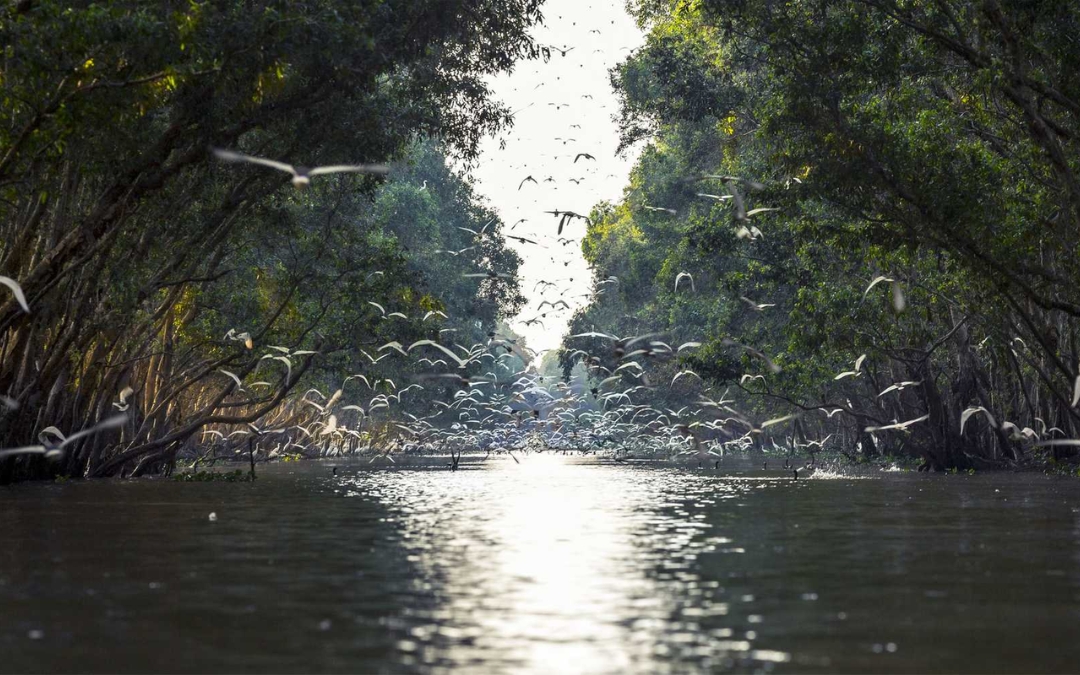
Tram Chim offers rare bird sightings in vast flooded grassland plains.
Top activities for visitors:
- Observe over 190 species, including rare species like the sarus crane and black-faced spoonbill, particularly during the migratory season.
- Paddle along the green canals for a peaceful, scenic experience while spotting various bird species.
- Cycle through the park to explore the unique ecosystem, and visit local villages to experience rural life in Dong Thap.
- Visit during the rainy season for vast landscapes and serene, tranquil skies that create a peaceful ambiance.
Best time to visit: The best time to visit is during the dry season from November to April, which offers cooler weather and better opportunities for bird-watching.
Travel tips: Don’t miss a visit to the nearby traditional villages where you can interact with locals, try homemade food, and learn about the traditional lifestyles in the Mekong Delta.
How to get there: The park is located about 120 km from Ho Chi Minh City and can be reached by car or bus.
Con Dao National Park (Ba Ria – Vung Tau)
Con Dao National Park covers an area of 19,883.15 hectares and is home to a diverse ecosystem, including mangroves, tropical forests, and vibrant coral reefs. The park is a sanctuary for several endangered species, including the hawksbill turtle, dugong, and the Con Dao black squirrel.
The park offers a blend of both natural beauty and historical significance, as it also served as a prison island during the French colonial era and the Second Indochina War.
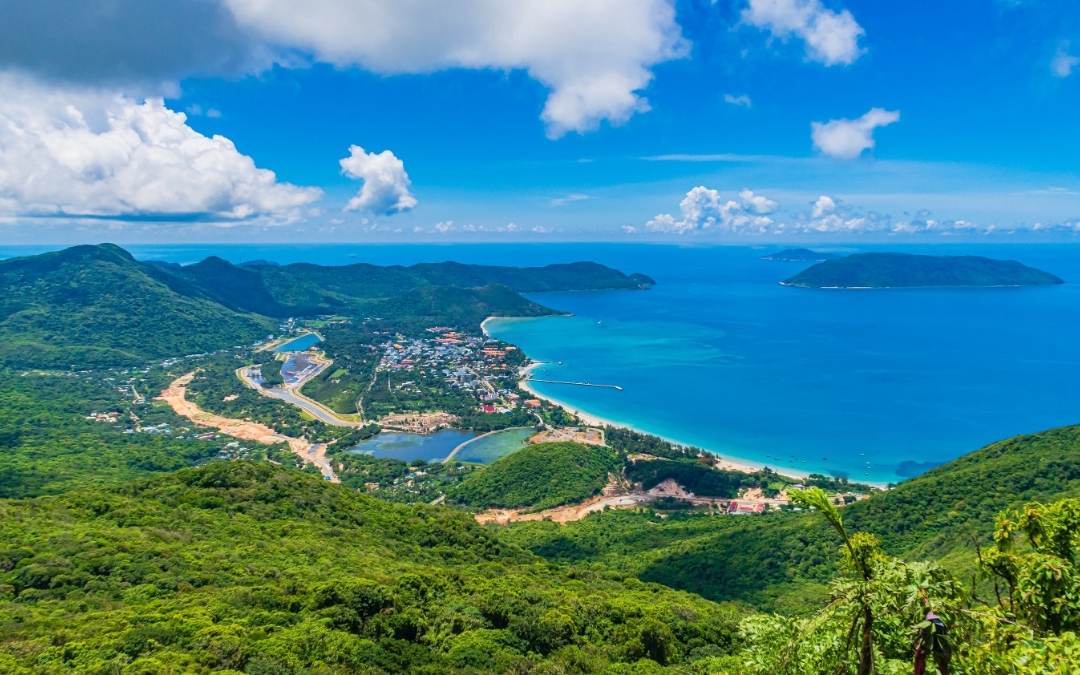
Con Dao protects sea turtles and coral reefs in crystal-clear waters.
Top activities for visitors:
- Discover the colorful coral reefs and marine life, including hawksbill turtles and other underwater species.
- Explore Mount Con Dao and its panoramic views over the island’s tropical forests and crystal-clear waters.
- Participate in the turtle release program on Hon Bay Canh Island, a key conservation activity aimed at protecting the endangered hawksbill turtles.
- Visit Con Dao Prison and other historical landmarks to learn about the island’s significant role in Vietnam’s colonial and war history.
Best time to visit: The ideal time to visit Con Dao is between March and September, when the weather is dry.
How to get there: Con Dao Island is accessible by flights from Ho Chi Minh City or by ferry from the mainland.
Accommodation: For a luxurious stay, consider Six Senses Con Dao Resort, where you can enjoy upscale amenities, eco-luxury living, and stunning ocean views.
>> Read More: Con Dao – A Completed Guide To Vietnam’s Untamed Paradise
Phu Quoc National Park (Kien Giang – Phu Quoc)
If you think of Phu Quoc solely for its pristine beaches and vibrant nightlife, you’re missing out on an extraordinary natural wonder. Phu Quoc National Park. It is situated in the island’s northern part.
Spanning over 29,596 hectares, this park encompasses dense tropical forests, freshwater streams, and vibrant coral reefs. With rich biodiversity, the park serves as a haven for endangered species such as the slow loris, Phu Quoc langur, and pygmy loris. Its vast landscapes are home to numerous plant species, including large timbers, rare orchids, and medicinal herbs.
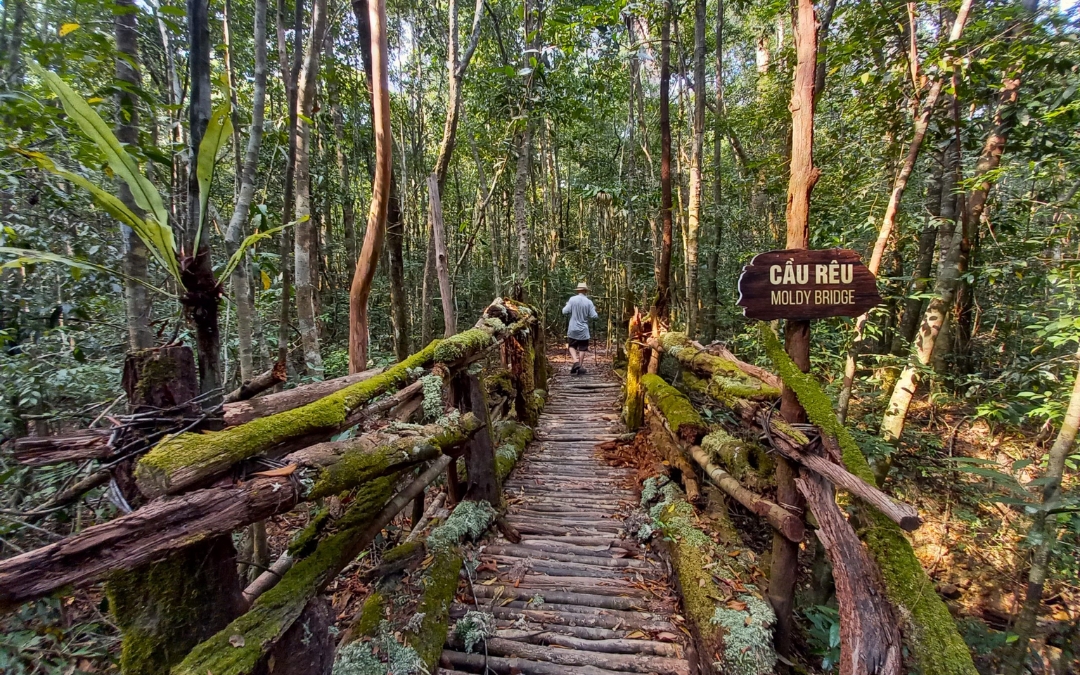
Phu Quoc blends jungle hikes with hidden beaches and ocean views.
Top activities for visitors:
- Snorkel or dive at An Thoi Archipelago, a group of islands with clear waters and vibrant coral reefs, home to a variety of marine species.
- Spot the Phu Quoc langur and slow loris on guided wildlife tours in the Strictly Protected Zone of the park.
- Visit the Ganh Dau Beach to enjoy the pristine coastline and indulge in water sports such as kayaking and swimming.
- Take a boat trip to Hon Thom Island for a day of relaxation on secluded beaches and to witness breathtaking coastal views.
- Explore the local fishing villages near Ham Ninh and learn about the traditional lifestyle of the island’s inhabitants.
Best time to visit: The ideal time to visit Phu Quoc National Park is during the dry season from November to March.
How to get there: You can easily access Phu Quoc National Park by renting a motorbike or joining a guided tour from Duong Dong town.
>> Read More: Phu Quoc Weather Guide – The Best Time to Visit for a Perfect Trip
How to Choose the Right National Park for You
Choosing the right national park for your trip depends on several factors that align with your preferences and what kind of experience you’re seeking. Consider these key factors to ensure a perfect visit.
- Accessibility (close to major cities or remote)
If convenience is important to you, accessibility plays a significant role in selecting a Vietnam national park. Some parks are located near major cities, making them perfect for a short getaway. For example, Ba Vi National Park is just a 1-2 hour drive from Hanoi, allowing easy access for visitors seeking a quick nature escape.
On the other hand, remote parks like Pu Mat National Park in Nghe An provide a more immersive experience but may require more effort to reach.
- Type of your favorite experience
If you’re looking for adventure, parks like Phong Nha – Ke Bang offer epic cave explorations and rugged hiking trails. For wildlife enthusiasts, parks like Cuc Phuong or Yok Don boast diverse animal species such as langurs, tigers, and elephants, making them ideal for wildlife watching.
For those seeking relaxation, parks like Bach Ma National Park provide serene waterfalls and peaceful walks through lush forests, offering the perfect environment to unwind.
- Season and weather considerations
The season and weather should be a top priority when planning your national park visit. Many parks, such as Ba Be National Park, are best visited in the dry months from October to April.
Conversely, parks like Cat Ba National Park experience their peak tourist seasons during the dry months, making it important to book accommodation in advance.
Always check the climate and seasonal conditions for the park you’re interested in visiting to make sure the weather aligns with your preferred activities.
- Facilities and accommodation options
The level of facilities and accommodations can also influence your decision. Some national parks like Cat Tien or Phong Nha – Ke Bang have a range of eco-lodges, guesthouses, and well-developed tourist infrastructure, making them ideal for those who enjoy a comfortable stay.
For a more rugged experience, Ba Be or Pu Mat National Parks offer more rustic accommodations, such as homestays or camping opportunities, allowing visitors to experience the park more intimately.
Let Us Take You to Vietnam’s Most Beautiful Natural Wonders
Vietnam national parks offer unparalleled natural beauty, rich biodiversity, and exciting adventure opportunities. Visiting these destinations not only allows you to experience Vietnam’s ecological wonders but also helps support conservation efforts.
If you’re ready to explore the breathtaking beauty of Vietnam’s national parks, let Asia Pioneer Travel help you plan the perfect adventure. Reach out to us today and start your journey into Vietnam’s wild side!
